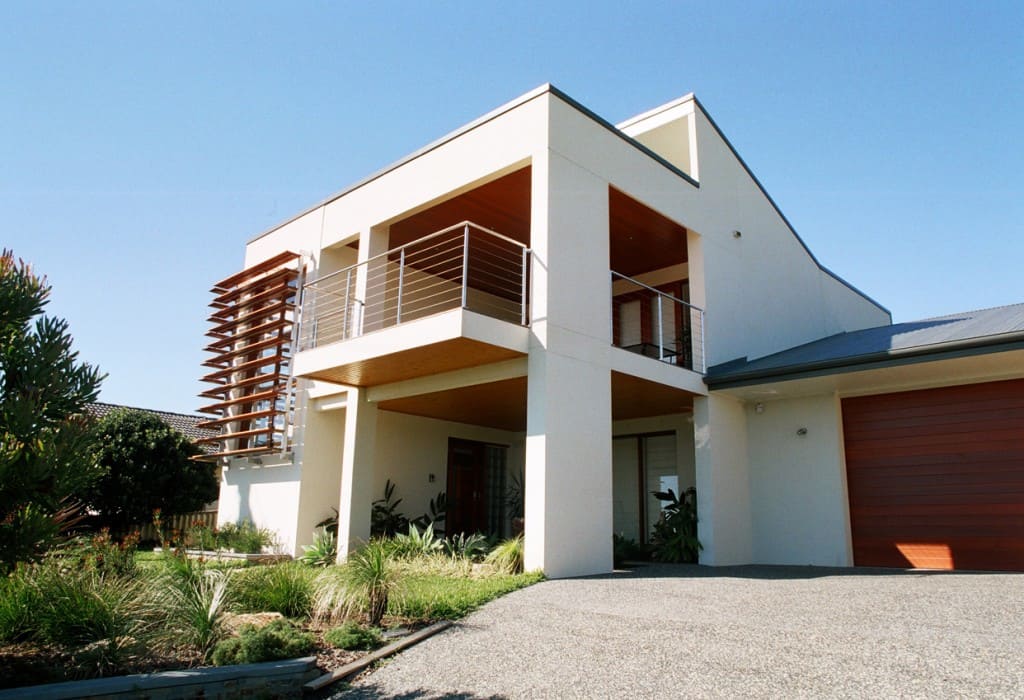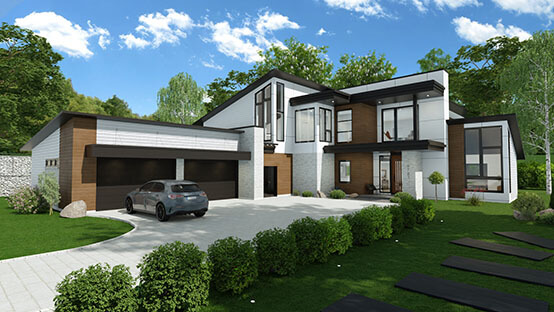Reliable Residential Architectural Firm for Personalized Home Designs and Renovations
Leading Trends in Residential Architecture You Need To Learn About
As household architecture remains to advance, a number of engaging patterns are forming the way we create and inhabit our living areas. Secret growths such as lasting structure techniques, the integration of wise home innovation, and the surge of modular homes emphasize a substantial change in the direction of both capability and environmental responsibility. In addition, principles like open strategy living and biophilic style are redefining our communication with area and nature. Recognizing these fads not just educates style selections but also reveals broader implications for lifestyle and area - residential house architect. What might these innovations mean for the future of residential living?
Lasting Building Practices
An enhancing number of property jobs are embracing lasting building practices, driven by an expanding awareness of ecological influence and energy effectiveness. This shift is identified by the combination of environment-friendly materials, energy-efficient layouts, and ingenious building and construction techniques. Home builders and property owners are significantly focusing on making use of eco-friendly resources, such as bamboo and recycled steels, which not just decrease the carbon impact but likewise enhance the toughness and aesthetic charm of homes.
Including energy-efficient systems is another important aspect of sustainable structure - residential house architect. Attributes such as high-performance insulation, energy-efficient windows, and solar panels are coming to be standard in new domestic layouts. These components not only contribute to lower power intake but also offer substantial lasting savings for property owners
Additionally, the format of lasting homes often highlights natural light and air flow, minimizing the dependence on artificial lighting and climate control systems. Landscaping methods, such as xeriscaping, additional advertise sustainability by decreasing water use.
As the need for lasting living remedies remains to climb, the household style field is positioned to adapt and innovate, guaranteeing that future homes are not only ecologically accountable however useful and likewise comfortable for their residents. - residential house architect
Smart Home Technology
Smart home technology is revolutionizing the way home owners connect with their space, boosting security, ease, and energy monitoring. This cutting-edge method incorporates different devices and systems, permitting individuals to control their homes from another location or through automated procedures. Central to this trend is using smart tools such as thermostats, illumination, security video cameras, and home appliances, all linked via the Web of Points (IoT)
One of one of the most appealing functions of smart home innovation is the capacity to personalize setups for optimal energy performance. Property owners can keep track of power use and readjust heating, illumination, and air conditioning based upon their routines, substantially reducing utility expenses. Sophisticated safety systems outfitted with clever locks and security cameras provide peace of mind, enabling remote monitoring and notifies to potential safety and security breaches.
Integration with voice-activated assistants enhances customer experience, permitting home owners to regulate tools with straightforward voice commands. As modern technology remains to progress, the capacity for wise home systems to improve lifestyle expands, making them a crucial factor to consider in contemporary property design. Ultimately, wise home technology is not just a fad however a fundamental change towards much more intelligent living settings.
Open Idea Living
Open principle living has emerged as a specifying function in contemporary property design, characterized by the elimination of conventional barriers in between spaces. see This layout viewpoint advertises fluidity and connection within the home, enabling for a smooth shift between areas such as the kitchen, dining, and living rooms. By getting rid of walls and dividings, open concept designs create a feeling of space, cultivating an inviting environment that boosts social interaction.

Additionally, this approach to property layout aligns with minimalism, concentrating on useful simplicity and aesthetic comprehensibility. Homeowners appreciate the adaptability of these layouts, which can be easily adapted to mirror individual style through furniture plan and style. As open concept living remains to get grip, it continues to be a testament to developing household characteristics and the need for homes that boost connection and comfort.
Biophilic Design
Biophilic style has actually ended up being significantly substantial in residential architecture, highlighting the innate connection in between human beings and nature. This layout philosophy looks for to incorporate all-natural components right into living rooms, therefore fostering a feeling of health and boosting the top quality of life for occupants. these details By including attributes such as all-natural light, plant life, and natural materials, biophilic style promotes a harmonious partnership in between interior atmospheres and the environment.
Trick components of biophilic layout include large windows that give unhampered views of outdoor landscapes, living walls that present greenery into insides, and open layout that encourage air movement and all-natural light penetration. Water attributes, both within and outside the home, serve to create comforting environments and enhance sensory experiences.
Furthermore, using lasting materials not just supports ecological stewardship however also adds to healthier indoor air top quality. As awareness of ecological problems increases, home owners are progressively prioritizing styles that reflect their connection to nature. Basically, biophilic design not just elevates visual appeal however also addresses emotional and emotional requirements, making it a vital pattern in modern domestic style.
Modular and Prefab Houses

Moreover, modular and prefab homes are designed with sustainability in mind. Many producers utilize energy-efficient systems and environmentally friendly materials, such as solar panels and progressed insulation strategies, adding to minimized power usage and lower energy costs for home owners. The versatility of style options permits modification, providing to diverse functional requirements and visual preferences.
As the demand for affordable real estate remains to rise, prefab and modular homes provide a practical solution, resolving both economic and environmental obstacles. Neighborhoods are increasingly identifying the capacity of these structures, incorporating them into city and rural setups. Generally, the trend towards modular and prefab homes indicates a shift towards much more lasting, efficient, and versatile living environments, making them a crucial aspect of modern domestic style.
Conclusion
To conclude, the developing landscape of household architecture showcases substantial trends that prioritize innovation, health, and sustainability. Lasting structure practices and wise home modern technologies enhance effectiveness and comfort, while open principle living and biophilic design foster social interaction and a connection to nature. In addition, the rise of modular and prefab homes provides adjustable and inexpensive services, showing a wider change in the direction of useful and responsible living. These trends jointly emphasize a dedication to developing unified and ingenious domestic environments.
Trick advancements such as lasting structure practices, the assimilation of wise home technology, and the surge of modular homes highlight a significant change in the direction of both performance and environmental duty.The rise of prefab and modular homes has changed the domestic style landscape, using innovative options for efficient and lasting living.Moreover, prefab and modular homes are designed with sustainability in mind. Generally, the trend towards prefab and modular homes represents a change toward a lot more lasting, effective, and versatile living environments, making them an essential facet of contemporary property style.
Sustainable structure techniques and smart home innovations boost efficiency and benefit, while open principle living and biophilic design foster social interaction and a connection to nature.